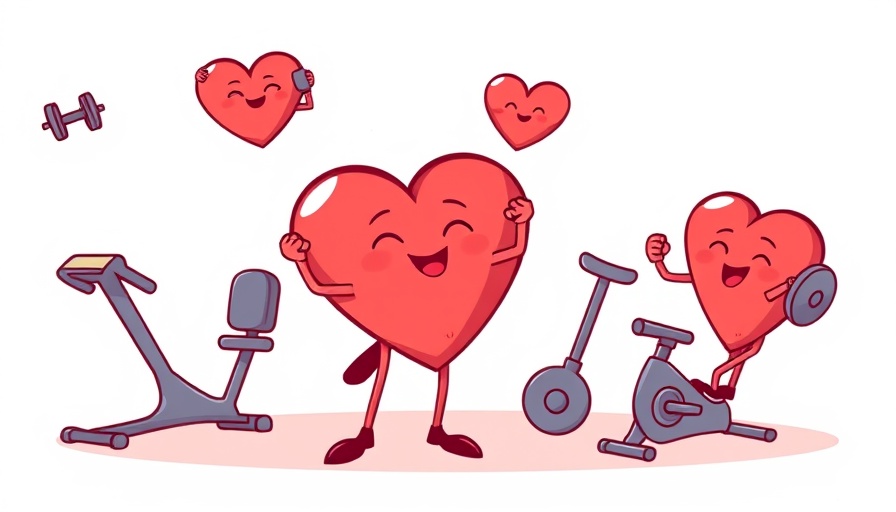
Why Regular Exercise is Key to a Healthy Heart
For health-conscious adults, especially those residing in vibrant metro areas like Atlanta, understanding the pivotal role of regular exercise in maintaining heart health is essential. Engaging in physical activities is one of the most effective methods to strengthen your heart muscle and improve overall cardiovascular health. From controlling weight to reducing risks associated with high blood pressure and cholesterol, a consistent exercise routine lays down the foundation for a healthier life.
Understanding Heart-Healthy Activities
Exercise comes in various forms and intensities. As highlighted by healthcare professionals at Johns Hopkins Medicine, incorporating both aerobic exercise and resistance training into your routine fortifies your heart while promoting complete physical fitness. Aerobic activities like brisk walking, jogging, swimming, or cycling significantly improve circulation and contribute to heart strength. For optimal results, aim for at least 150 minutes of moderate aerobic activity per week.
Resistance training, another vital component, enhances muscle mass and reduces body fat, further promoting heart health. As you integrate these types of exercises, you’ll experience not only physical benefits but also an improved sense of well-being.
Making Exercise Manageable
For many busy individuals, the thought of dedicating 30 minutes daily to structured exercise may seem daunting. However, the American Heart Association suggests that even short bouts of activity can accumulate to meet daily goals. If you feel constrained by time, consider incorporating brief exercise sessions or active interruptions throughout your day. Simple adjustments, like taking the stairs instead of the elevator or walking during your lunch break, can yield substantial health benefits.
Tips for Creating a Heart-Healthy Exercise Plan
Starting a heart-healthy exercise plan doesn’t have to be complex. Here are essential tips that resonate with local residents looking to enhance their cardiovascular wellness:
Aerobic Exercises: Engage in aerobic exercises such as walking, running, or cycling for at least 30 minutes most days of the week. Don’t forget creative options like dancing or interactive games that involve movement.
Incorporate Strength Training: Include strength exercises targeting major muscle groups twice a week. This not only improves muscle tone but also combats age-related losses.
Focus on Balance: Perform balance exercises to prevent falls and injuries, particularly for older adults or those with mobility issues. Simple practices like standing on one foot or yoga can nurture stability.
Maintain Flexibility: Ensure you dedicate time for stretching to maintain flexibility and reduce the risk of injury. Aim for stretching sessions two times a week.
Listen to Your Body: Progress gradually and be aware of your limits. Starting slowly and building intensity is essential, especially if you're new to fitness.
Local Resources for Enhancing Heart Health
Residents of Metro Atlanta can take advantage of various community resources to maintain their heart health. Local gyms and community centers typically offer classes tailored for all fitness levels, from high-intensity workouts to gentle yoga sessions, providing plenty of opportunities to exercise in a supportive environment.
Connections Between Heart Health and Lifestyle Choices
It’s not just the exercise; your overall lifestyle greatly impacts heart health. Maintaining a balanced diet, ensuring adequate hydration, and getting enough sleep are all critical components. A nutritious diet filled with fruits, vegetables, whole grains, and lean proteins complements your exercise routine and enhances cardiovascular health. This holistic approach not only aids in weight management but also improves mental health, thus cultivating a happier and healthier lifestyle.
Conclusion and Call to Action
As you embark on your journey toward heart health, remember that each small step counts. Whether it’s a dance class, a brisk walk around the neighborhood, or a strength training session, the goal is to keep moving and stay active. Don’t hesitate to connect with a local fitness group or consult healthcare professionals for personalized advice tailored to your needs. Your heart will thank you!
 Add Row
Add Row  Add
Add 




Write A Comment